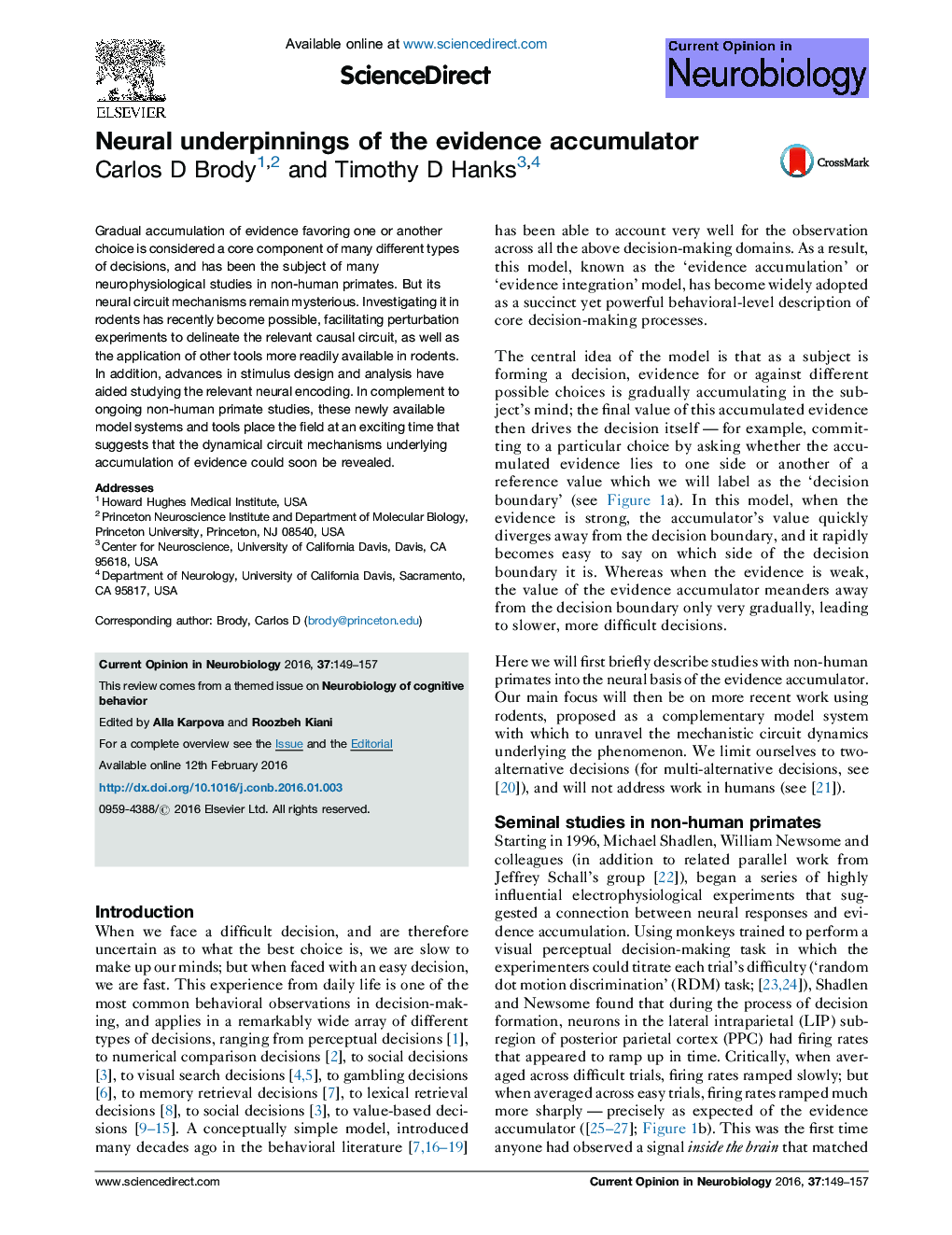| Article ID | Journal | Published Year | Pages | File Type |
|---|---|---|---|---|
| 6266186 | Current Opinion in Neurobiology | 2016 | 9 Pages |
â¢Gradual accumulation of evidence, core to decision-making, can be studied in rodents.â¢Pulse-based sensory evidence stimuli facilitate behavioral and neural analysis.â¢High-time-resolution inactivation helps identify role of different brain regions.â¢Differential role of the five brain regions studied so far is being distinguished.â¢Causal circuit for accumulation involves only some of the regions studied so far.
Gradual accumulation of evidence favoring one or another choice is considered a core component of many different types of decisions, and has been the subject of many neurophysiological studies in non-human primates. But its neural circuit mechanisms remain mysterious. Investigating it in rodents has recently become possible, facilitating perturbation experiments to delineate the relevant causal circuit, as well as the application of other tools more readily available in rodents. In addition, advances in stimulus design and analysis have aided studying the relevant neural encoding. In complement to ongoing non-human primate studies, these newly available model systems and tools place the field at an exciting time that suggests that the dynamical circuit mechanisms underlying accumulation of evidence could soon be revealed.
